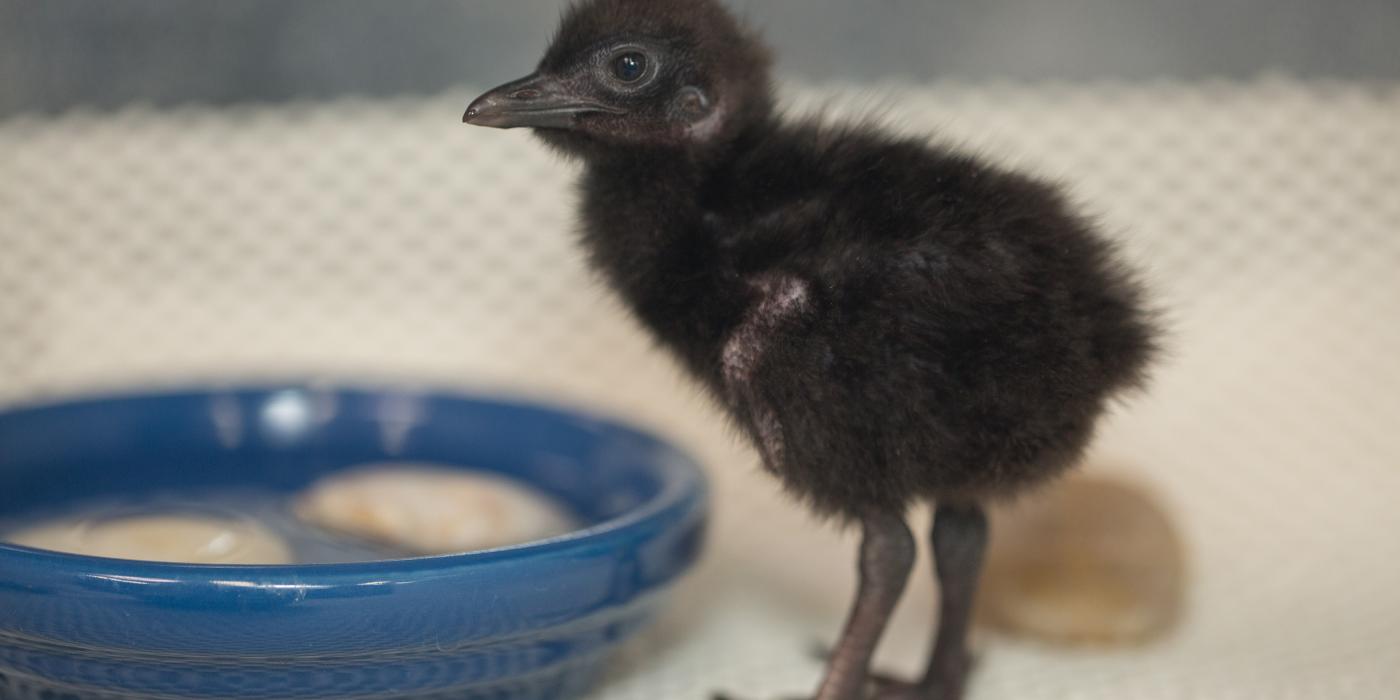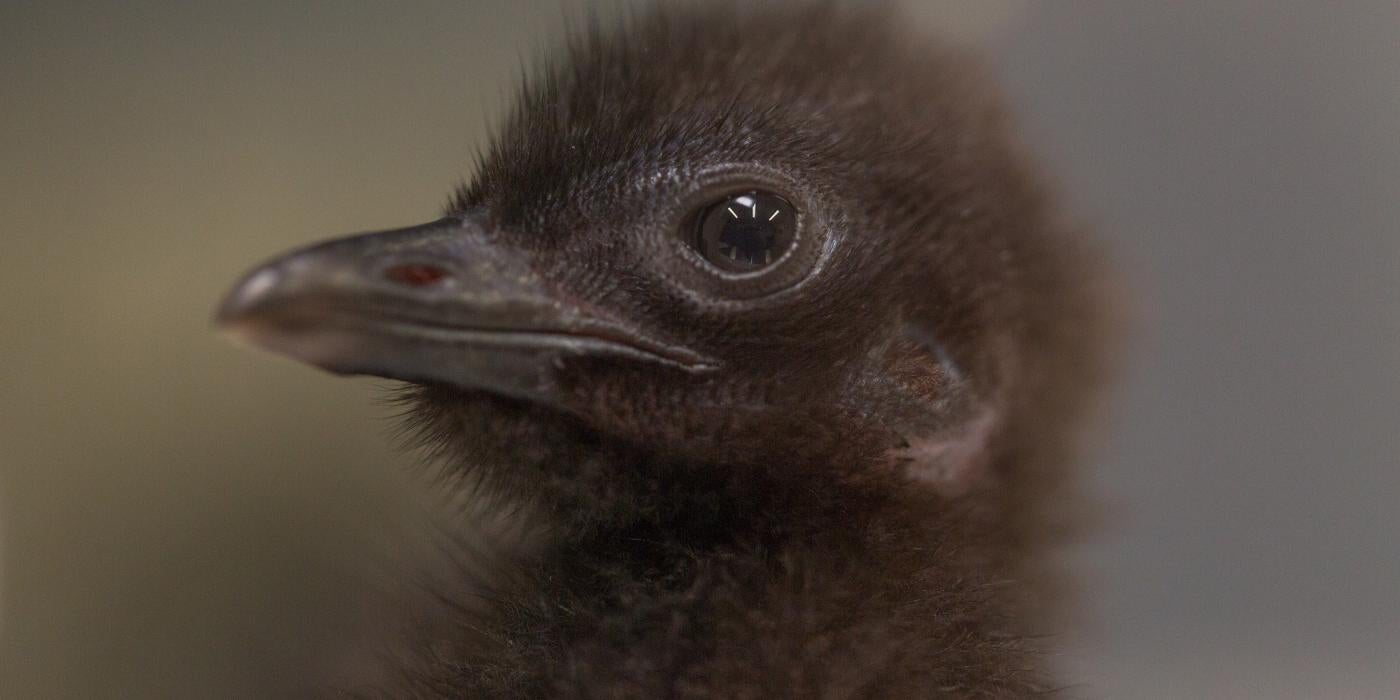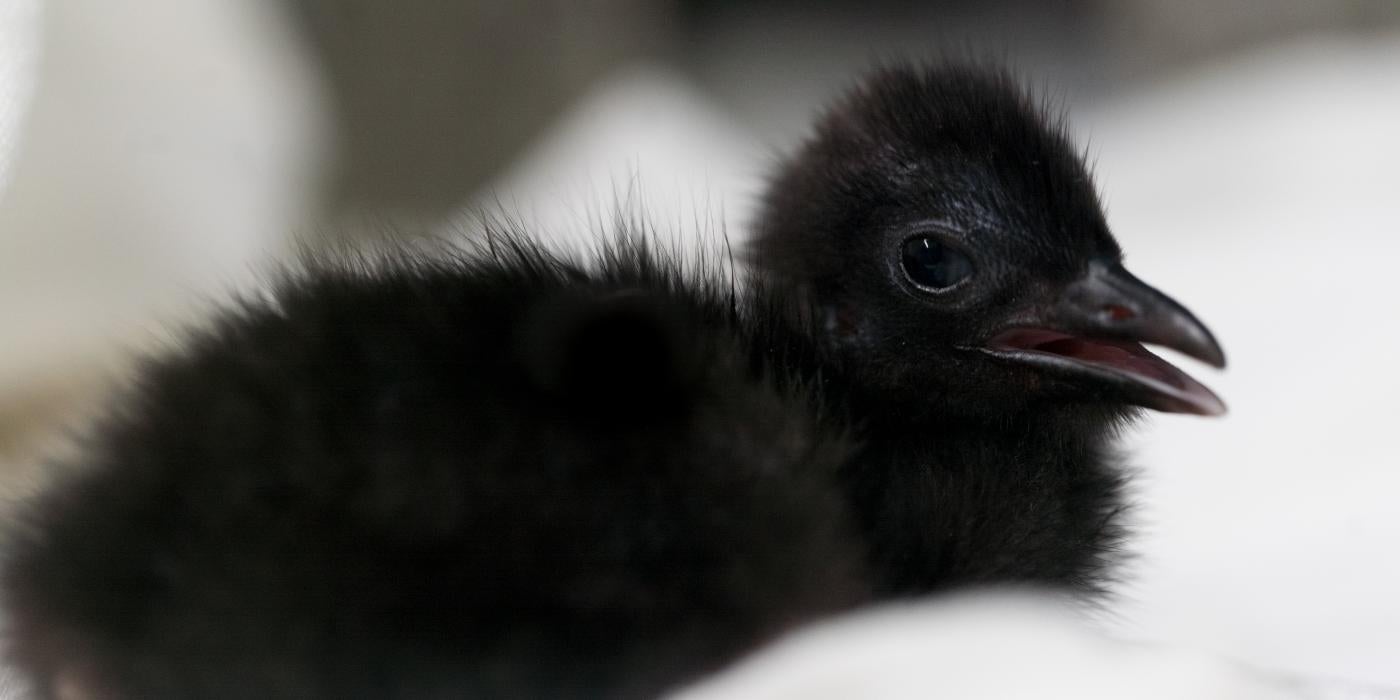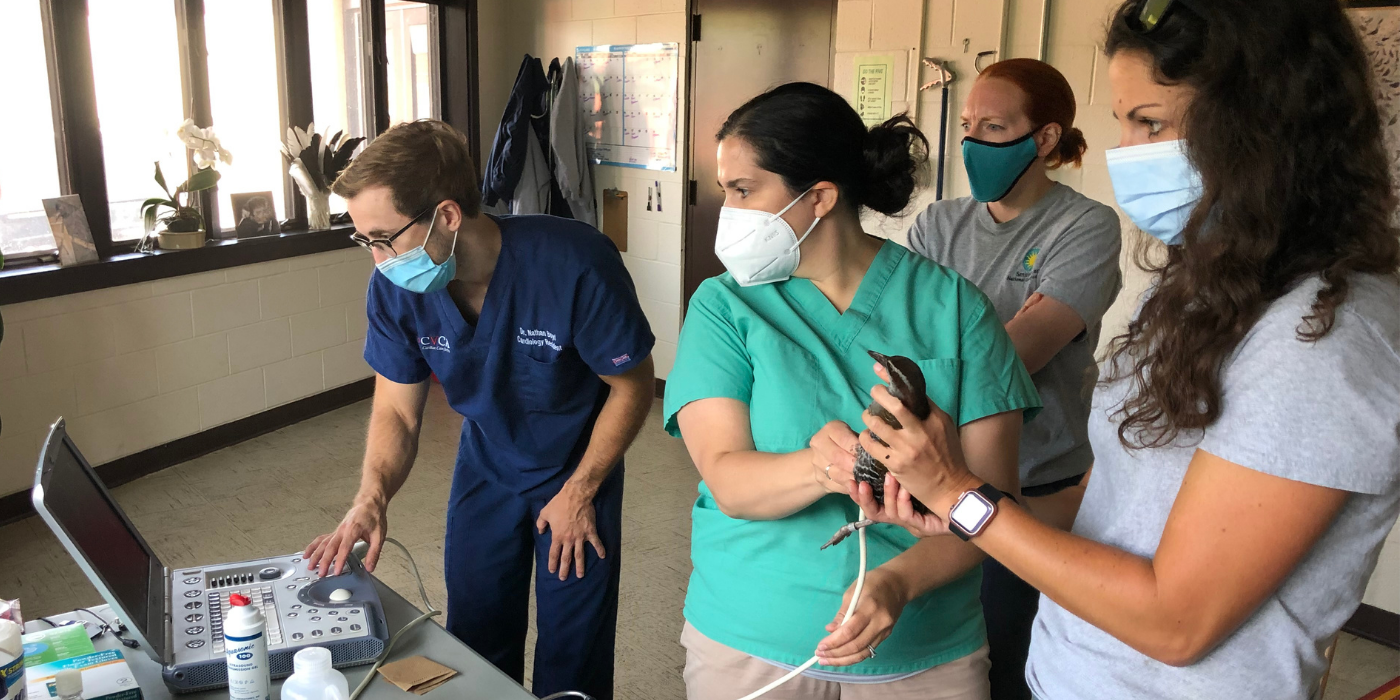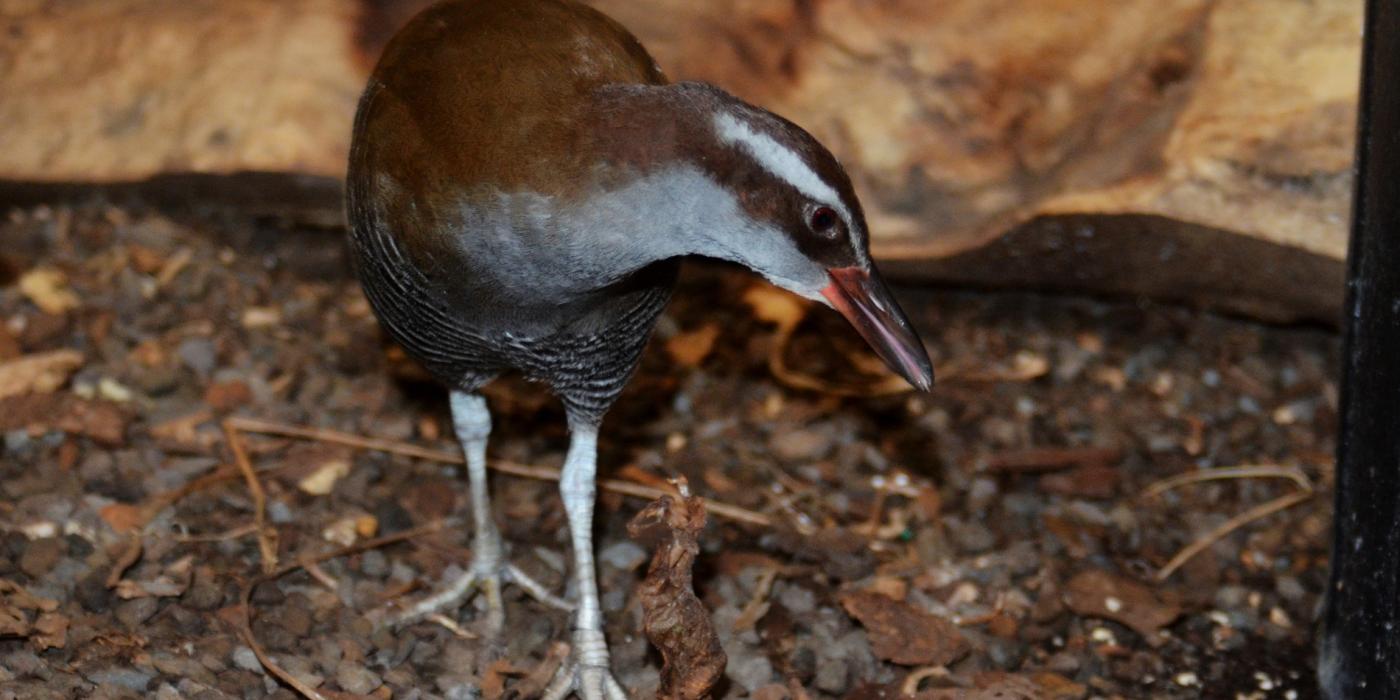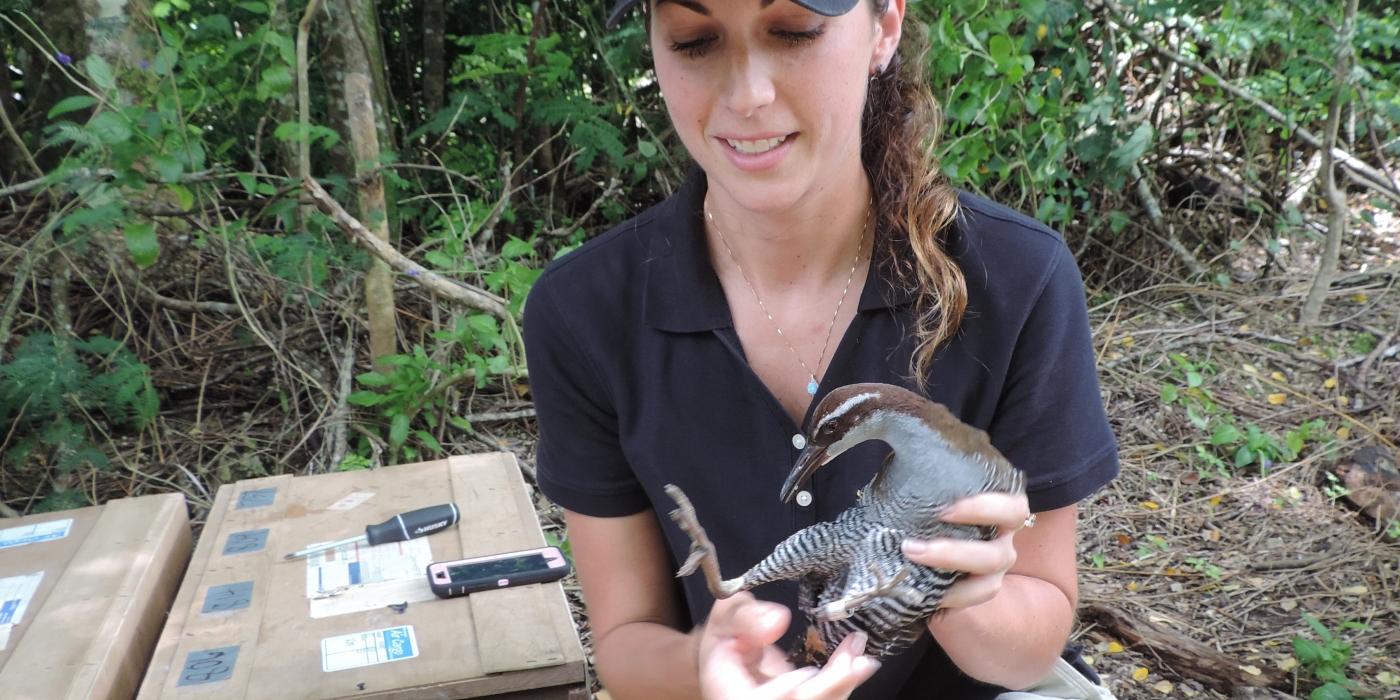Bringing Back Guam Rails
The Smithsonian Conservation Biology Institute (SCBI) is experiencing a Guam rail baby boom. Three chicks, covered in black downy feathers with oversized feet, hatched in January. One male chick hatched Jan. 16, and two more chicks hatched Jan. 25. They join the five healthy chicks that SCBI welcomed in 2017.
The chick who hatched Jan. 16 is being hand-raised. He is going to serve as ambassador for his species and the breeding and reintroduction program for the Guam Department of Aquatic and Wildlife Resources. If a chick is hand-reared, keepers will mimic the conditions of a nest with an incubator.
“The egg needs to be kept at 37.6 degrees Celsius and 58 percent humidity,” says Erica Royer, primary keeper for Guam rails. “If we notice a problem with the egg, we can adjust the humidity or temperature accordingly.”
Approximately half-way through incubation, keepers are able to determine if the chick is male or female. The only way to determine if a chick is male or female before it reaches sexual maturity is to get a DNA sample. Keepers collect a very small blood sample from the egg through an extremely tiny hole, which is then covered with epoxy. The procedure does not hurt the chick and it continues developing normally afterwards. There are no external differences between male and female Guam rails—their plumage looks the same and they are about the same size.
In the days before a chick hatches and during the hatching process, parents will vocalize to the chicks inside the egg to encourage the bird to hatch and to allow the chick to learn and recognize the vocalizations of their parents. The chick will then vocalize back from inside the egg.
“For our hand-reared chicks, we will whistle and the hatchling will actually call back from inside the egg,” says Royer. Keepers only whistle to hand-reared chicks because it’s important that parent-reared chicks recognize and respond to their parents’ unique call.
Two more tiny speckled Guam rail eggs hatched Jan. 25, but keepers will not hand-raise those birds. Their parents successfully incubated the eggs and have been caring for them. Female Guam rails can lay between one and five eggs, though two to three is more common. Parents take turns incubating the egg, though the female tends to do the majority of the incubating as the chick gets closer to hatching. Guam rail parents construct nests by scooping a concave shape in the ground and putting the finishing touches on it by adding some dry grass or leaves.
These newest chicks will have a big job to do to help their species, which is classified as “extinct in the wild” by the International Union for Conservation of Nature. Nearly all of the chicks hatched at SCBI will be released to the wild this spring with the hope of ultimately creating a self-sustaining Guam rail population in the wild.
The two clutches of chicks that hatched in November 2017 are candidates for release to the wild and are healthy and gaining weight. They were hatched by two different pairs of parents. Royer describes one pair of the Guam rail parents as “experienced and reliable,” with strong instincts to protect their vulnerable eggs. While the second pair has less experience parenting, they produced two healthy chicks last year and the chicks hatched Jan. 25.
If a parent-reared chick hatches, the keepers’ approach to caring for it is very different from a hand-reared chick. They avoid handling the bird unless necessary. Since many of these birds will live on their own in the wild one day, keepers want to preserve their natural instincts to be cautious of humans. Although chick-rearing is largely left up to the parents, keepers continue to monitor their incubation and development.
“We will set their food and water out in the morning and leave quickly,” says Royer. “These birds are very skittish, so we don’t disturb them. We make sure that the chicks are eating and drinking by watching them from behind a blind.”
Additionally, they have cameras located by the food and water dishes to unobtrusively ensure that the birds are getting adequate nutrition.
“The only time that we interact with the parent-raised chicks is right after they hatch,” says Royer. “We weigh them and offer them food and water. We do that with the parents nearby so that they can hear their chick vocalizing the whole time. As the first few days of a chick’s life are crucial to their development, we’re providing them with supplemental food and water to ensure that they will thrive in that critical stage.”
Guam rail chicks are well-prepared for life outside the egg once they hatch. Unlike many other birds, these chicks hatch covered in down feathers.
“They are mobile and can leave the nest within 24 hours and are even able pick up food independently, though they still depend on their parents for warmth and protection” explains Royer.
Keepers have to determine the optimal age for the chicks to journey to Rota and be released into the wild. If they are too young, the transportation process could be stressful. If they are too old, they may face more challenges adapting to life in the wild.
Breeding programs like SCBI’s have restored wild populations to over 200 individuals. In 1985, SCBI was the first to institution outside of Guam to receive these birds for breeding. Last September, Royer and SCBI Deputy Director, Will Pitt, released two Guam rails born at SCBI on the island of Rota. The release of those chicks, along with 47 others born at different facilities, marked the first time in 32 years that Guam rails living in the wild outnumbered those in human care.
Related Species:

